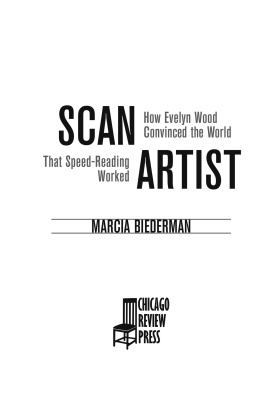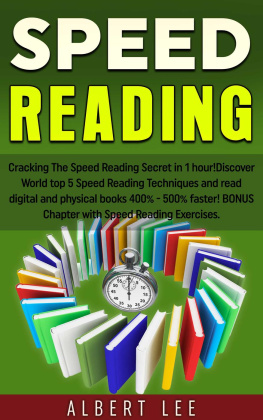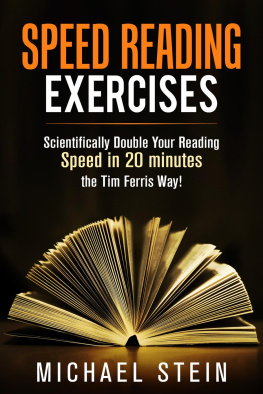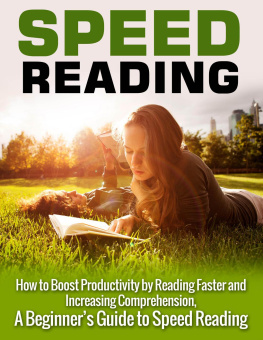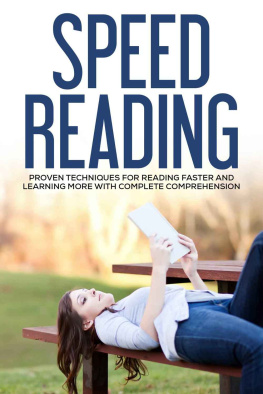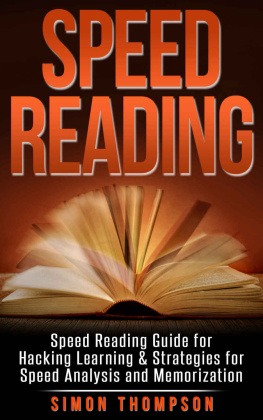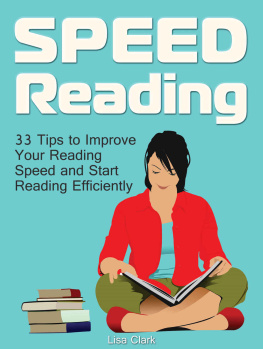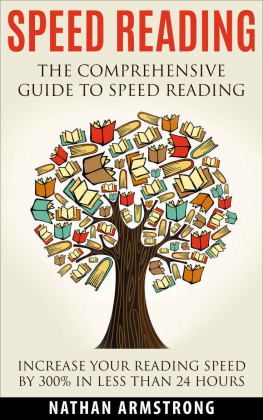Names: Biederman, Marcia, 1949 author.
Title: Scan artist : how Evelyn Wood convinced the world that speed-reading
worked / Marcia Biederman.
Description: Chicago, Illinois : Chicago Review Press, 2019. | Includes
bibliographical references and index.
Identifiers: LCCN 2019001289 (print) | LCCN 2019003575 (ebook) | ISBN
9781641601634 (adobe pdf) | ISBN 9781641601658 (epub) | ISBN 9781641601641
(kindle) | ISBN 9781641601627 (cloth)
Subjects: LCSH: Wood, Evelyn Nielsen, 19091995. | Speed-reading. | Women
educatorsUnited StatesBiography. | BusinesswomenUnited
StatesBiography.
Classification: LCC LA2317.W656 (ebook) | LCC LA2317.W656 B54 2019 (print) |
DDC 428.4/3dc23
LC record available at https://lccn.loc.gov/2019001289
Prologue
THE BIG STORIES OF THE 1961 National Education Association convention were supposed to be about federal aid to education and school desegregation, but a middle-aged teacher from Utah and her pubescent student grabbed the headlines instead.
It was June 26, the first real working day of the weeklong event, following its official Sunday opening with the read-aloud of a message from President John F. Kennedy. At this point, the press area of the Atlantic City Convention Hall had produced plenty of soiled coffee cups but few typewritten pages. JFK in absentia did not make good copy. Todays advance transcripts of the evening speech by Jonas Salk seemed equally inauspicious. The legendary medical researcher had no new discoveries to report.
However, the newshounds soon found a suitable equivalent. Hard-nosed as they liked to seem, most journalists present were pushovers for a new brand of snake oil. The information explosion was in full swing, and millions of words were gushing out. Reporters and other professionals of the era were gripped with self-doubt. How could they keep up?
The Atlantic City convention promised a seaside cure. Listed in the program as simply Wood Dynamic Reading ProcessEvelyn N. Wood, assistant professor of reading, University of Delaware, Newark, Delaware, it was one of dozens of presentations offered to the ten thousand delegates in the cavernous convention hall. But Evelyn turned it into the main event.
Short, middle-aged, and invariably described as a schoolteacher with all the dullness that implied, Evelyn played the part of emcee before an audience of 150. The stars were two Wilmington, Delaware, high school students trained by Evelyn in what she called her revolutionary reading method. Audience members were invited to choose a book from a stack of volumes never before seen by the youths. Each student in turn would have three minutes to tear through a section and report on the contents.
A stopwatch ticked, and the audience gaped as seventeen-year-old Robert Darling ripped through 120 pages, running his fingers down each before turning to the next. He closed the book to deliver a detailed summary that drew exclamations from his dazzled listeners. He spoke for fifteen minutes, five times as long as hed spent reading.
Science has since shown that such free recall testing is subject to fabrication. No course or technology has produced outsized gains in reading speed without sacrificing comprehension. Readers who skip or scan might try to fill in missing pieces through inference. But this is skimming, and decades of experimentation have shown its abysmal effects on grasping an authors intended meaning. Speed-reading marketers still flourish on the internet, but federal regulators have stopped some from making extraordinary promises.
In 1961, however, Evelyn had a nervous world in her palm. She opened the floor to questions and let the young man explain her method. Reading down the page rather than across it allowed him to absorb concepts and thoughts rather than individual words, he said. He credited her for his prowess, eliminating any need for her to blow her own horn.
Tell him how many books youve finished in this past year, Bob, prompted another youth in the Wood entourage.
Seven thousand, Darling reportedly replied (although hed later protest that hed been misquoted and that a more accurate figure was several thousand), prompting sharp inhalations of breath and much scribbling in reporters notebooks.
Louise Mahru, also seventeen, got her own turn to demonstrate. She nearly matched Bobs rate and did it in French, a language shed studied for only one year in high school, the audience was told. But by then, the newspeople were mentally composing lead paragraphs. Racing back to the typewriters, phones, and coffee urns provided by the NEA to facilitate coverage of more consequential issues, they filed breathless reports on the Wood method.
One Hundred Twenty Pages in Three Minutes, read the headline of an Associated Press wire piece run in dozens of papers, sometimes under other titles, like Bookworm TurnsPage a Second and NEA Agog at Boys Skill. The revolutionary reading method... raised gasps of astonishment, wrote the Chicago News Service,
And yet the dynamic reading method offered little more than what had been taught in reading development courses around the country, wrote George Gerbner, the dean of the University of Pennsylvanias Annenberg School for Communication and the author of a 1967 study of the event. But, he continued, the name of Mrs. Wood was likely to ring bells in the mind of an alert reporter. Her first publicity coup, Gerbner wrote, was to inspire four US senators to demonstrate and endorse her methods on national television. Placing young Bob Darling on display was, he said, her second master stroke.
In fact, these were only a few of her genius moves. If Bob Darling was the reading wizard, as the U of Penn paper dubbed him, Evelyn was the half-hidden woman behind the curtain, pulling the strings but not demanding we pay no attention to her. All her life, shed sought the limelightas a prize-winning orator in junior college and a champion university debater; as the wife of the president of an overseas Mormon mission; and as director, playwright, and lyricist of an elaborate pageant, staged with special effects and a cast of one thousand in Salt Lake Citys Mormon Tabernacle.
Slim, earnest Evelyn, as Time magazine described her, had an enviably spare silhouette at age fifty-two, probably owed to a hyperthyroid condition for which shed eventually have surgery. She cultivated the schoolteacher title, but it was inaccurate. A Utah school district had allowed her to pilot her method on its students, but as dean of girls, she normally worked outside the classroom.
The section of her rsum most relevant to her current enterprise was unknown to the media. Years of directing young people, on stage and on radio, had guided her choice of Bob Darling as her demonstrator. He not only had excelled in his class at his hometowns Evelyn Wood Reading Dynamics institute, one of twenty-two in the country, but also was an accomplished student pianist whod soloed with the Wilmington Symphony Orchestra. He could read books, and he could read audiences.
Most importantly, he was unshakably loyal to Evelyn, who had been his teacher but was now his employer, paying for his appearances according to terms negotiated by his father, an executive at DuPont, Wilmingtons dominant employer, and his mother, a member of the symphonys auxiliary. Interviewed recently, Bob said he regarded Evelyn as a second mother, albeit one who didnt drop her guard. Everything she said was in complete sentences, with a capital at the beginning and a period at the end, he recalled. She got along well with his mother and sister, shopping with them at upscale consignment shops run by clubwomen. Soft-spoken and customarily attired in sweater sets, she struck Bob as a Mount Holyoke or Wellesley lady, like his mothers friends. There was, however, the occasional jarring note that revealed her origins in the intermountain West, a world away from the quiet restraint of the Seven Sisters colleges, as when Evelyn gave Bob a copy of the Book of Mormon. Despite his prodigious reading speed, he never bothered to read it through.

